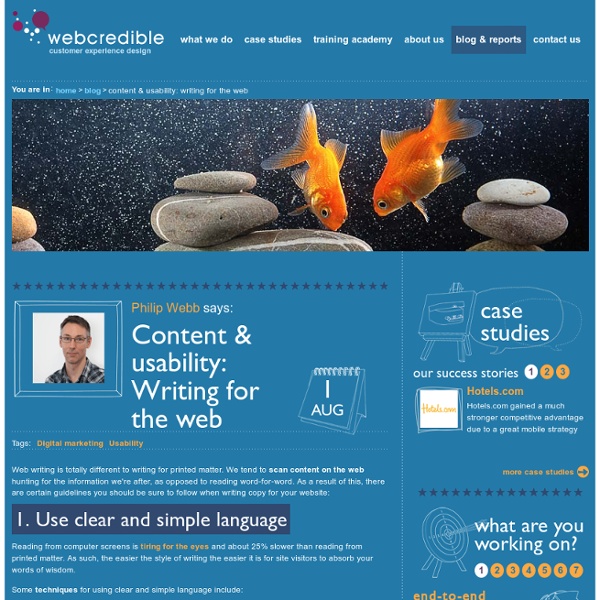Ntent & usability: Web writing

The Creative Writing World | All Your Writing Needs – Fulfilled!
How I use OneNote for my Dissertation « ProtoScholar
The question came up recently about how I am using OneNote for my dissertation note taking. Sometimes show is easier than tell. I have one OneNote notebook called Dissertation. Within it, I have 8 sections: A few things about this: The first 5 sections reflect the 5 chapters required in my dissertation: Introduction, Literature Review, Methods, Findings, ConclusionI have a tab called Media into which I put less scholarly discussion around my topic. Within each section, I am creating multiple tabs with notes on specific sub-areas. Notice that the first tab is labeled structure. Below that, each 1st author has a tab. Within each tab, I take notes on the paper. Key things to notice: the bibliographic reference is at the top. In this case I copied the abstract in, since it did a good job of summarizing the paper. If I see a specific number or quote that I believe I will use, I include those in the page. I have done some playing around with tags, but find that to be OneNote’s weakest feature.
Claudia Ricci: Why Serialize a Novel Online? Good Question!
A reader wrote in yesterday asking: "I don't quite understand this experiment of serializing a novel online. If I can read it online for free why would I buy the book? The writer asks a good question and before today's installment of Seeing Red, I think it's important address it. Serialization of a novel online is an experiment in digital storytelling. Also, if people really started flocking to a website for a particular book (i.e. if an author became very popular on-line) then a website could theoretically at least pay the author for the rights to the book (and collect revenue through ads.) There is another possibility: we may decide to serialize the first ten chapters, or the first 20, and then tell people that if they want to keep reading they have to buy the book either electronically or in print form. Starting today, we are posting the first installment of a second novel, The Spiritkeeper, by Lynn Biederstadt, on MyStoryLives. Here is the next installment of Seeing Red: Dr. "Ronda?"
Writers Net - Writing resources, news and discussion for authors / writers, editors, publishers and agents
Things-To-Do Before Publishing Your Site | gonzoblog.nl_V.02
Everytime you’re working on a new website there are some things and/or actions that should be considered before publishing a new website and making everything public. It is very important to be prepared in advance, as things are inevitable. In this article I’ll try to capture some of these important things and/or factors many developers often forget during the process of web development. Forgetting these actions can add up to big problems, considering these items will help your search engine ranking result and the overall user experiences of your site. The idea to write an article about this topic has everything to do with my publication of a new site yesterday, my ‘invite-me-to-dribbble-website’: – please tweet, share or bookmark! Domain Name, Web Hosting and Social Media Also it is quite important to choose a good and reliable webhost where you can host your site, more about this: How to Choose Your Type of Webhosting. Title & Meta Tags Validation Sitemap
The Online Community for Writers
Related:
Related:



